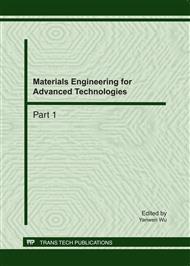p.1480
p.1485
p.1489
p.1496
p.1502
p.1507
p.1511
p.1516
p.1521
Research Based on Information Fusion of Safety Risks Prediction and Control Management in Construction
Abstract:
Safety risks management of safety potential information and hazard sources has been taken in Construction process. It is the most important measure to solve the current situation that safety accidents is frequent in Chinese Construction projects. The main reasons of frequent accidents were find out and the D-S evidence theory of multi-source information fusion method was used to reduce the accident rate in Construction safety in this paper. Through analyzing and predicting the engineering data and information in human, machine, environment and management four aspects in Construction, prediction model was built in Construction safety risks management, the possibility of dangerous and harmful level in the construction project can be known, preventive measures for specific situations were taken and promptly the safety state of the Construction will be ensured.
Info:
Periodical:
Pages:
1502-1506
Citation:
Online since:
June 2011
Keywords:
Price:
Сopyright:
© 2011 Trans Tech Publications Ltd. All Rights Reserved
Share:
Citation:


